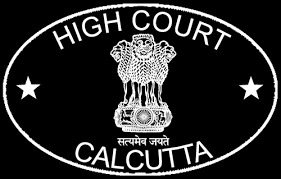Beachcroft, J.@mdashSome of the defendants are the appellants before me. The suit was one for recovery of possession. The plaintiffs claim to be under-raiyats under one Baikuntha Chakravarty who, they stated, was a raiyat of one Girija Kanta Lahiri of Kolipur, the land according to them being in village Baladashi. Defendants Nos. 1 to 6 claim to be under-raiyats under defendants Nos. 7 to 15. They stated that the land was in village Rampasha of which the Zemindars are known as the Bhowanipore Zamindars. Thus it would seem that the simplest way to decide the question was to find out the situation of the land. That view recommended itself to the Subordinate Judge before whom the matter went on appeal from the Munsif, who decreed the suit. The learned Subordinate Judge, after discussing the evidence, directed a remand and ordered a local investigation to be made with reference to the Thak map and after setting aside the judgment and decree of the Munsif be directed the Court to hold a fresh trial but without taking further evidence, except such as might bear on the Commissioner''s report. Possibly it is unfortunate that he directed a fresh trial instead of sending the matter back merely for a finding on the issue. However, a local investigation was made by the Commissioner and the Munsif, when the matter went before him again, this time dismissed the suit, relying on the finding of the Commissioner that the land was in village Rampasha. Then the matter went on appeal, this time before another Subordinate Judge, who came to the conclusion that the result of the Commissioner''s investigation was not satisfactory because the Thak map as it stood was in favour of the plaintiffs though some orders had been made for the correction of the Thak map, which in fact had never been carried out. Ha then went on to say that the question of the situation of the land was not really very material in view of certain other findings to which he had come. Those findings were that the land had been purchased by Baikunta Chakravarti from one Bolai Majhi to whom admittedly the land belonged previously and that the story of Abhoy''s purchase, Abhoy being a person through whom the defendants claim, was untrue. He accordingly decreed the suit.
2. Three points have been urged here. The first is that the learned Subordinate Judge had no jurisdiction to go behind the remand order which was made by his predecessor as there was no appeal against that order. The second is that when the Subordinate Judge stated that the result of the Commissioner''s enquiry was unsatisfactory he should have directed another enquiry, and thirdly, that he was wrong in finding the plaintiffs'' title merely'' because Baikunta had purchased from the former raiyat, because the holding being a non-transferable occupancy holding it was to be proved that Baikunta''s title had been recognised by the landlord.
3. I shall take the second point first. It has been argued on the authority of the case of Tirthabasi Sing Roy v. Bepin Krishna Roy 34 Ind. Cas. 30 : 30 C.L.J. 600, that wherever the Court finds that a local investigation which it considers necessary is unsatisfactory, it shall direct another local investigation. I do not think that the case cited goes to that length, and personally I am not prepared to go to that length. What was held in that case was that on the particular facts of the cape there had been a substantial error or defect in the procedure which had affected the decision of the case. Here what has happened is that the Judge found that the Thak map, on reference to which the first Subordinate Judge directed a local investigation, was incorrect as it stood. It is true that there was a note made by the Deputy Collector that a correction should be made. But as a matter of fact the map has stood for 60 years uncorrected. It seems to me that it would be idle to direct a further investigation with reference to the same map with reference to which the Judge has already stated that the investigation was unsatisfactory. It should be noted that it was not found that the Commissioner''s findings were unreliable or that he had not made the investigation properly. It comes to this then that the materials which were at the disposal of the Commissioner were not sufficient to enable him to come to a proper result. That being so and the first Subordinate Judge having directed a re-trial in the matter, the Court was bound to consider the case on the rest of the material which was before it. This really disposes of the first point also, because it is net a question of the Court going behind the remand order but that the Judge found that carrying cut the remand, order would have no other result. It is true he says that that point does not properly arise, but that does not affect the case one way or the other because he bas disposed of the appeal in the only possible way, viz., on the evidence which was left.
4. Then it appears that both the parties claim to have a proprietary title from Bolai Majhi. The plaintiffs state that they claim through the purchase by Baikunta from Bolai and the defendants state that they claim through the purchase by Abhoy from Bolai. As I have already pointed out, the learned Subordinate Judge aocepted the story of purchase by Baikunta as true and that of Abhoy as false. It is argued that this is not sufficient but that the Court should have farther considered whether the story of settlement with Abhoy by the Zemindars from whom the defendants claim was true or not. Now the settlement by the Zemindars was realiy based on the fact of Abhoy''s purchase from Bolai. It is true that he might have acquired his title from the Zemindars independently of his purchase from Bolai. But the case as made was, not that Abhoy took a settlement from the landlord, but that he had purchased from Bolai and then took a Battlement from the landlord, a case which the learned Judge has found to be false, and the defendants are now trying to fall back to another ground.
5. It is further pointed out on behalf of the respondents that the question of transferability arises only when the objection is made by the landlord. In the case of Dayamoyi v. Ananda Mohan Roy 27 Ind. Cas. 61 : 18 C.W.N. 971(F.B.) : 42 C. 172 : 20 C.L.J. 52, it was held that the transfer of the whole or a part is operative as against all other persons where it is operative against the raiyat. Then it is further to be observed that the learned Subordinate Judge found that according to the settlement map also, the land appears to be included in the village Baladashi.
6. On this state of facts, I think this appeal must be dismissed with costs.

